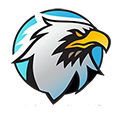6 minutes
Inhabiting the Role of the Future
A board chair’s effectiveness can dramatically impact an organization’s trajectory. A strong chair facilitates an environment for a CEO to maximize their potential, propelling a credit union toward achieving strategic goals at an accelerated pace. Conversely, a weak chair premises a CEO’s mediocrity, leading to subpar organizational performance.
This article frames the impact and criticality of the board chair role with relatable archetypes to call upon when the situation arises.
Firstly, it is important to note that the rules and responsibilities of the chair position are more similar than dissimilar from organization to organization. However, how the role is enacted—or how the role could be inhabited—is informed by a number of variables, including the sophistication or maturity of the organization’s strategy, which phase of leadership succession (whether it’s the CEO or the board) they are in, and the credit union’s financial performance. Regardless, it is the incumbent chair’s role to facilitate progress (What Are Your Board’s Historically Unmentionable Topics?).
The glory that is the board chair position is not without its challenges. Managing people (mostly peers), nurturing critical thinking, stimulating and facilitating strategic dialogue, and appropriately holding directors accountable to enact their fiduciary and governance responsibilities is a tall order (Start Your Board Assessment With A ‘BOP’). The challenge is amplified with a group of volunteers who dedicate precious time to altruistic causes. These (sometimes seemingly) Herculean challenges do not excuse the board chair from the responsibility of understanding what kind of leadership archetype they need to call upon to facilitate progress.
Board chairs can take the opportunity to regularly ask themselves, “What kind of board chair does the organization and board need right now?” Enacting the same style of chair leadership in a substantially changed context poses risks.
The following six board chair archetypes, although not all-encompassing or mutually exclusive, offer opportunities for adaptation or evolution of chair leadership. Each archetype has a distinctive mindset, action orientation, interaction style, contribution to the board and organization, type of relationship with the CEO, and liability. The sampling below is extracted from one of the board development modules used in our Elevating Board Impact program.
The Policy & Procedural Wonk
 This chair can view the board and organization through the perspective of believing that the best policies and procedures will lead them to great governance and high performance. These chairs will be meticulous, analytical, and process-focused, positioning great documentation to encourage great actions. They will have very defined, and potentially compartmentalized, relationships with the rest of the board members and CEO. Their commitment to procedures might feel transactional to some or stifle innovation: “That’s not how we’ve always done it.” Others’ inclination to innovate or enhance impact can be overshadowed by the need to “do it right.”
This chair can view the board and organization through the perspective of believing that the best policies and procedures will lead them to great governance and high performance. These chairs will be meticulous, analytical, and process-focused, positioning great documentation to encourage great actions. They will have very defined, and potentially compartmentalized, relationships with the rest of the board members and CEO. Their commitment to procedures might feel transactional to some or stifle innovation: “That’s not how we’ve always done it.” Others’ inclination to innovate or enhance impact can be overshadowed by the need to “do it right.”
The Evangelist
 This fairly common archetype is a true believer in credit unions’ mission. The joke is, “They might actually have a seven cooperative principles tattoo.” Their commitment to “people helping people” evokes passion and volunteerism in others. They regularly ask, “How will this help our members?” They are inclusive, interactive, and have an extensive network of other credit union contacts because they are not wallflowers at conferences. Their passion occasionally produces impulsive behaviors with a myopic view of their interpretation of the vision, causing them to skip over details and a meaningful understanding of the risks.
This fairly common archetype is a true believer in credit unions’ mission. The joke is, “They might actually have a seven cooperative principles tattoo.” Their commitment to “people helping people” evokes passion and volunteerism in others. They regularly ask, “How will this help our members?” They are inclusive, interactive, and have an extensive network of other credit union contacts because they are not wallflowers at conferences. Their passion occasionally produces impulsive behaviors with a myopic view of their interpretation of the vision, causing them to skip over details and a meaningful understanding of the risks.
The Sage
 These chairs are very experienced and have “successfully” navigated organizational, professional, and probably personal challenges. They will freely, generously, and frequently offer their guidance based on decades of experience. They know how to anticipate and allocate resources and are not shy about indirectly flexing their stature as chair. They will help the CEO navigate the political landscape and be a strong supporter of the separation of duties (“We have one employee.”). To that end, they aim to build consensus among board members because a unified decision will be a long-supported decision. Depending on the context, the heavily seasoned nature of their disposition might cause them to view new ideas or major shifts in strategy as too risky, especially with the landscape changing so quickly (“We’ve been successful so far. Why change now?”).
These chairs are very experienced and have “successfully” navigated organizational, professional, and probably personal challenges. They will freely, generously, and frequently offer their guidance based on decades of experience. They know how to anticipate and allocate resources and are not shy about indirectly flexing their stature as chair. They will help the CEO navigate the political landscape and be a strong supporter of the separation of duties (“We have one employee.”). To that end, they aim to build consensus among board members because a unified decision will be a long-supported decision. Depending on the context, the heavily seasoned nature of their disposition might cause them to view new ideas or major shifts in strategy as too risky, especially with the landscape changing so quickly (“We’ve been successful so far. Why change now?”).
The Hawk
 Hawks are easy to pick out of a crowd because they have a sharp eye for problems, opportunities, and challenges. They are knowledgeable and decisive because they have “been there and done that.” Their communication style is usually laced with a sense of urgency, providing direction whenever or wherever they see fit (which can potentially be interpreted as management-level decisions). They provide strong leadership, ensure accountability, and “run a tight ship” because details matter. This archetype is especially effective in a crisis situation. However, their results orientation can potentially be domineering and stifle dissent (which rewards acquiescence), making them impervious to new ideas.
Hawks are easy to pick out of a crowd because they have a sharp eye for problems, opportunities, and challenges. They are knowledgeable and decisive because they have “been there and done that.” Their communication style is usually laced with a sense of urgency, providing direction whenever or wherever they see fit (which can potentially be interpreted as management-level decisions). They provide strong leadership, ensure accountability, and “run a tight ship” because details matter. This archetype is especially effective in a crisis situation. However, their results orientation can potentially be domineering and stifle dissent (which rewards acquiescence), making them impervious to new ideas.
The Empowerer
 This fairly common archetype delegates work to the appropriate parties (management, committees, etc.) and avoids becoming a bottleneck for inconsequential actions. They recognize that the chair role is important, yet they may focus their time, skills, and most thoughtful contributions on their other non-board commitments. Due to this dynamic, they may miss deadlines, meetings, or zig when normally they zag with decisions. The CEO mostly appreciates the relationship, as a strong mutual respect exists. However, it can be frustrating when the board needs an involved facilitator, putting the CEO in the difficult and potentially compromising position of managing their bosses.
This fairly common archetype delegates work to the appropriate parties (management, committees, etc.) and avoids becoming a bottleneck for inconsequential actions. They recognize that the chair role is important, yet they may focus their time, skills, and most thoughtful contributions on their other non-board commitments. Due to this dynamic, they may miss deadlines, meetings, or zig when normally they zag with decisions. The CEO mostly appreciates the relationship, as a strong mutual respect exists. However, it can be frustrating when the board needs an involved facilitator, putting the CEO in the difficult and potentially compromising position of managing their bosses.
The Strategic Navigator
 This less common archetype possesses a deep understanding of the industry and trends, guides the board in setting long-term vision and strategic priorities, and encourages bold but well-reasoned decisions. They prioritize conceptual dialogue that is informed by emerging indicators yet make sure everyone, board and management alike, are crystal clear on the short- and long-term strategic priorities. Their futuristic orientation and abstract thinking will (mostly appropriately) challenge management to be on their toes, developing comprehensive and holistic strategies. By living in the future and being inclined to make big moves, they may lack an understanding of operational realities (“It’s so simple. Let’s just do X.”) or push for change for change’s sake.
This less common archetype possesses a deep understanding of the industry and trends, guides the board in setting long-term vision and strategic priorities, and encourages bold but well-reasoned decisions. They prioritize conceptual dialogue that is informed by emerging indicators yet make sure everyone, board and management alike, are crystal clear on the short- and long-term strategic priorities. Their futuristic orientation and abstract thinking will (mostly appropriately) challenge management to be on their toes, developing comprehensive and holistic strategies. By living in the future and being inclined to make big moves, they may lack an understanding of operational realities (“It’s so simple. Let’s just do X.”) or push for change for change’s sake.
Closing Thoughts/Questions
No single archetype is perfect for every organization or scenario. The hope is to stimulate a thought process on how board chairs can flex, learn, and evolve their leadership dispositions to align with future needs. We offer a few consideration questions to jump-start that thought process:
- Which archetype(s) is most familiar?
- What are the short- and long-term implications of that type?
- Which type was needed five years ago?
- Which type(s) will be needed, and how much of that type, over the next five years?
- What might be the consequences of not enacting that archetype?
To complexify the conversation, how did the board chair come to inhabit a particular archetype? Was it a reactive posture, adapting to the lowest- or highest-performing board member? Was it proactive, gauging their approach based on the strategic imperatives? Or was it the disposition that is most comfortable to them?
Regardless of the answers, this topic connects directly to strategic board succession planning (Succession Planning Does Not Equal Term Limits), encompassing onboarding new talent and equipping them with the skills (The Critical Mindset Of The Board Member) and leadership styles needed to excel as board members and future chairs. The board, CEO, and organization of the future depend on having the right leader in the right place at the right time.
Peter Myers is SVP of CUESolutions provider and Advancing Women sponsor DDJ Myers, an ALM First company. DDJ Myers has been working with credit unions in a professional development capacity since 1989. The company has won awards for our innovative and impactful work across the country with organizations of all shapes and sizes. As part of its CEO succession planning process, executive search work, or strategy development and deployment programs, DDJ Myers deploys its organization alignment assessment, an instrument that provides stakeholders actionable insights about the organization’s strategic alignment and optimal readiness for future actions. The OAA has collected thousands of responses, so the data can now be considered across a variety of factors, including organization level, departments, tenure, race/ethnicity, and gender.
Illustrations by Coni Bourin, Graphic Designer at DDJ Myers






